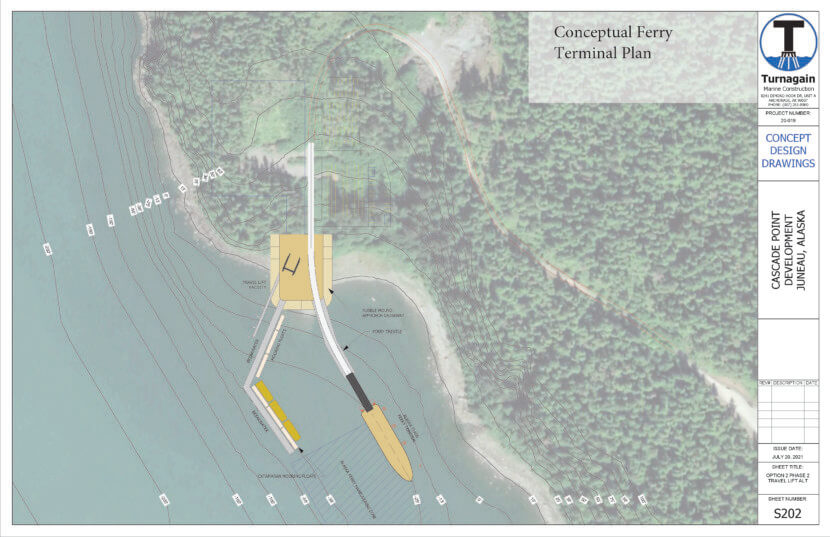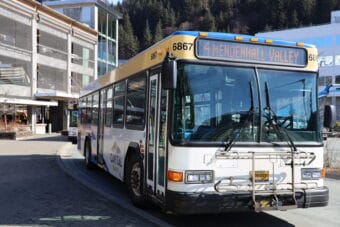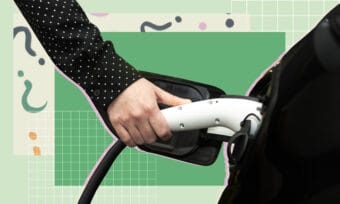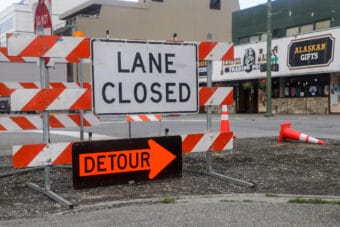
State transportation officials have taken a small step toward building a new ferry terminal at the end of Juneau’s road. It’s intended to shorten travel times and improve service between Juneau, Haines, Skagway and the road system.
Federal officials approved a wide-ranging amendment earlier this month to the Statewide Transportation Infrastructure Program, or STIP. Among the dozens of new projects in the list is a call for $30 million for the new ferry terminal, but with no specific timeline.
Projects that make the STIP list aren’t guaranteed federal transportation funding, but it is one avenue that can lead to it. A Federal Highway Administration spokesperson said that the Cascade Point project is only “illustrative” at this point and is not yet eligible to be funded.
Goldbelt Inc., Juneau’s urban Native corporation, owns the undeveloped land at Cascade Point. By sea, it’s about 23 miles closer to Haines and Skagway than Juneau’s existing ferry terminal at Auke Bay. Goldbelt and the Alaska Department of Transportation and Public Facilities signed an agreement in 2021 to work together on the new ferry terminal idea.
“We’ve been working together trying to come to an agreement to develop that area. We’re still, still in a process of establishing feasibility … trying to establish that funding mechanism and who’s doing what,” said Rob Carpenter, the state’s deputy transportation commissioner. “We have a potential vision of a long-term lease with Cascade Point, where Goldbelt corporation would build it, and we would lease it (from) them in some sort of long-term period.”
The shorter ferry route is expected to reduce the system’s operating expenses, slash fares, and shorten travel time — even after factoring in the extra driving time. It also means crew could complete a full circuit between Juneau, Skagway and Haines without running afoul of a Coast Guard rule limiting work shifts to 12 hours.
The concept for the new terminal is spartan, and it would not replace the terminal at Auke Bay. It calls for an unstaffed day-use facility with off-the-grid support infrastructure: pit toilets, storage tanks for drinking water and to take sewage from ferries, and a generator for power.
Goldbelt CEO McHugh Pierre said improving this link will have wider ripple effects on the average shareholder, and on Juneau as a whole.
“Then we could have lower-cost transportation, which would provide lower cost of goods, which would lead to lower cost of services and lower cost of living in Juneau,” Pierre said. “Not to mention fresher produce, you know, better products and overall, better quality of life.”
Additional facilities at the site could also improve Goldbelt’s shuttle service for Kensington Mine workers.
The new ferry terminal concept has its skeptics and critics. Like local civil engineer Rich Moniak, who doubted many of the assumptions and expectations in a July column in The Juneau Empire. He questioned if cheaper fares and shorter rides would translate into greater demand, and he questioned Goldbelt’s assertions about lowering the costs of living in Juneau.
Aaron Brakel is with the Southeast Alaska Conservation Council, which prizes the surrounding Berners Bay for its wildlife and pristine beauty.
“Cascade Point is a terrible project for Juneau,” he said. “It’s bad for Haines, it’s bad for Skagway.”
He said it would be a logistical nightmare getting people to and from the end of the road, though Goldbelt said it will offer bus service.
Brakel said additional marine traffic in the area could also threaten herring runs in Berners Bay.
However, Brakel said he’s very supportive of the ferry system’s interest in building an electric ferry. Earlier this year, the state applied for a federal grant seeking $46 million to build one that would work for short routes — specifically, between Haines and Skagway, Homer and Seldovia, or Ketchikan and Metlakatla.
If an electric ferry regularly ran between Haines and Skagway, Brakel said a ferry from Juneau wouldn’t need to go to both communities in one day.
“It would really solve this Juneau-to-north-Lynn-Canal, day-run issue in a much better way,” Brakel said. “Auke Bay to Haines, perfect. You know, no other turnaround needed. That’s a really good solution in my view.”
Even if the ferry terminal doesn’t happen, Cascade Point and other land around Echo Cove are flagged in Juneau’s long-term land use plan for development eventually with a mix of residential, recreational and water-related uses.
Historically, Juneau’s local officials have supported development efforts there. In 1998, the Juneau Assembly supported extending the road to Cascade Point. And in 2013, the mayor attended a ribbon cutting for the new section of road.
In addition to the Cascade Point ferry terminal, the STIP list now has many more projects addressing known ferry system issues — like replacing the system’s two oldest ferries, the Matanuska and Tustumena, and improvements at ferry terminals around the state to accommodate the state’s newest ferries, the Hubbard and Tazlina.
The Tazlina is also on the list to be modified to have crew quarters. That’s already underway with the Hubbard. Without crew quarters, Coast Guard rules regarding crew rest greatly limit the routes these vessels can sail.
“We’re pursuing all kinds of different funding sources, particularly grant money that’s available through the infrastructure bill that just passed Congress,” said Carpenter, with the state Transportation Department. “In order to receive that grant money, a lot of it has to be itemized out in the STIP. So we threw things in there that we know we wanted to be done. And how we end up funding them in the end is to be determined.”



